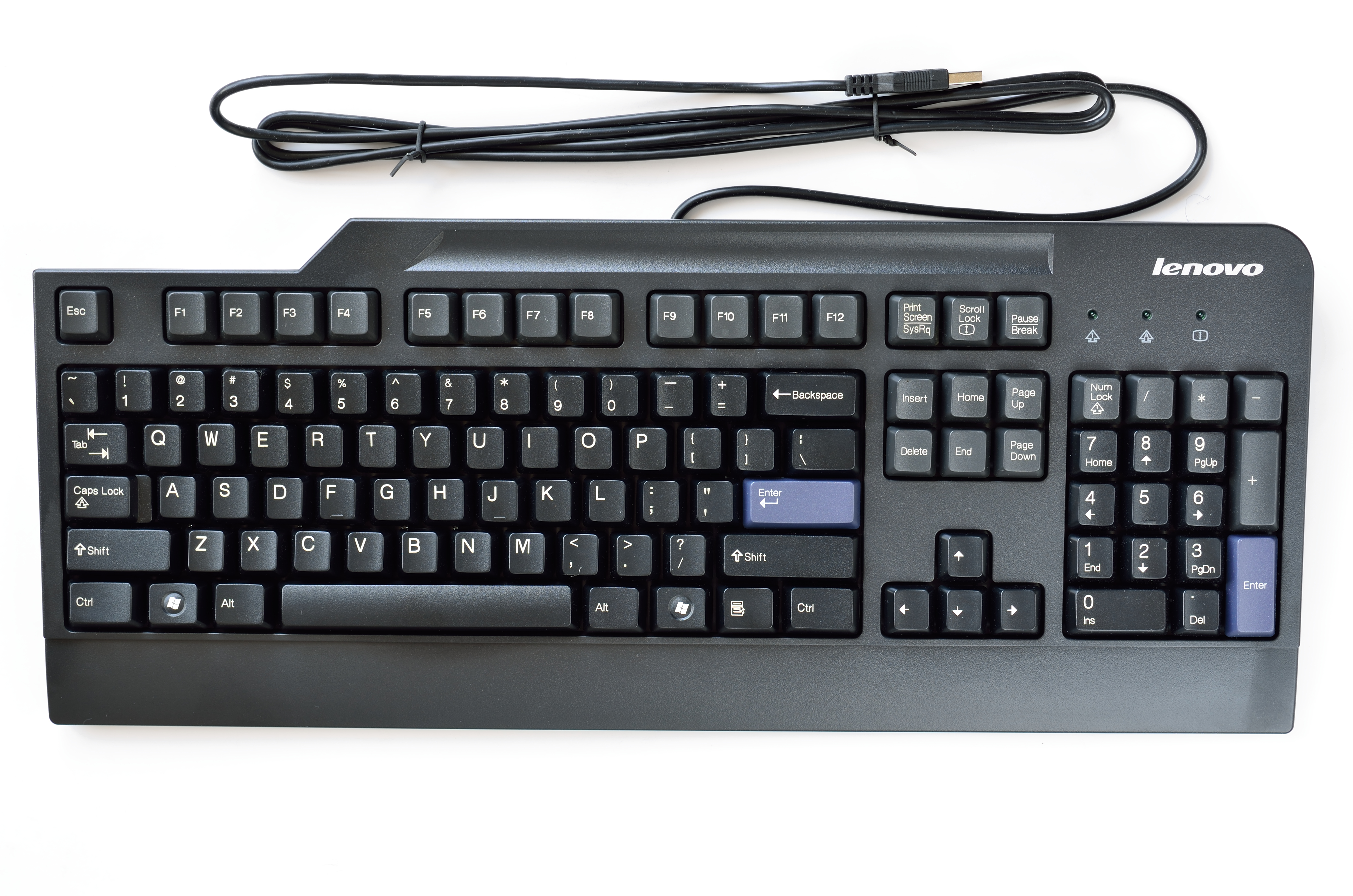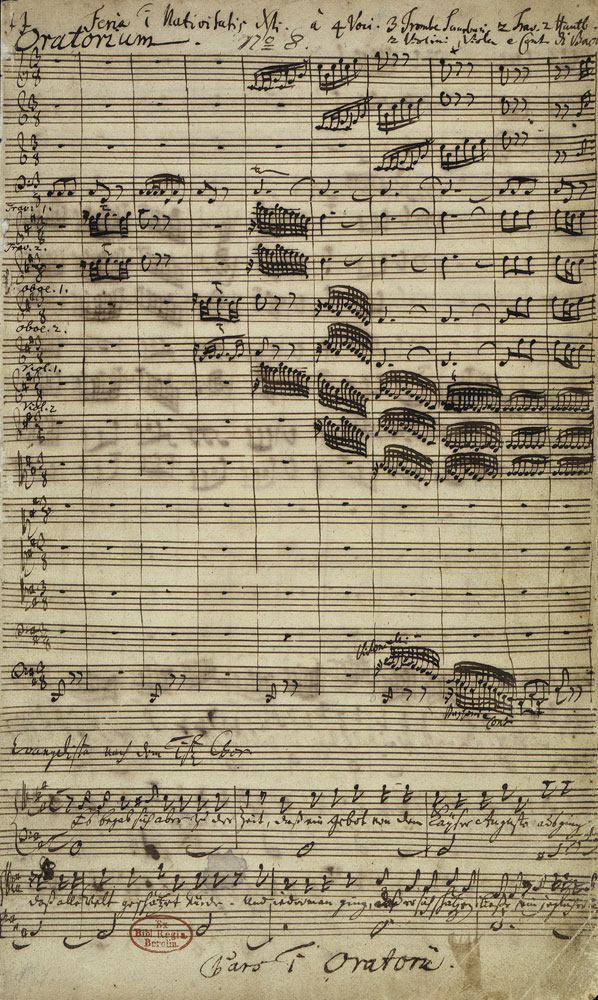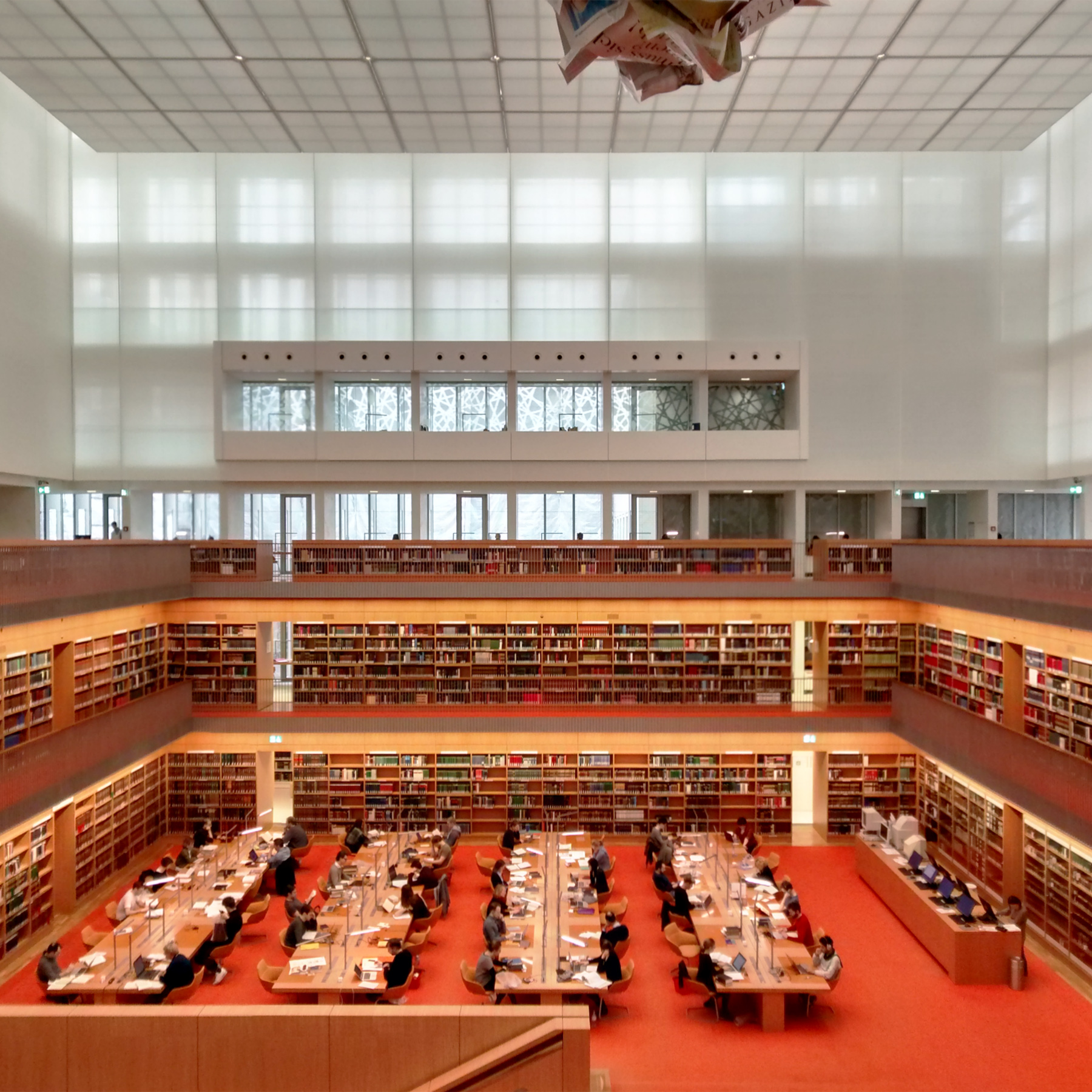|
Copyists
A copyist is a person who makes duplications of the same thing. The modern use of the term is mainly confined to music copyists, who are employed by the music industry to produce neat copies from a composer or arranger's manuscript. However, the term is sometimes used for artists who make copies of other artists' paintings. Music copyists Until the 1990s, most copyists worked by hand to write out scores and individual instrumental parts neatly, using a calligraphy pen, staff paper, and often a ruler. Producing parts for an entire orchestra from a full score was a huge task. In the 1990s, copyists began using scorewriters – computer programs which are the music notation equivalent of a word processor. (Such programs include Sibelius, Finale, MuseScore, LilyPond, and many others). Scorewriters allow the composer or songwriter to enter the melodies, rhythms and lyrics to their compositions into the computer using a computer mouse or keyboard or by playing the notes on a ... [...More Info...] [...Related Items...] OR: [Wikipedia] [Google] [Baidu] |
Computer Keyboard
A computer keyboard is a built-in or peripheral input device modeled after the typewriter keyboard which uses an arrangement of buttons or Push-button, keys to act as Mechanical keyboard, mechanical levers or Electronic switching system, electronic switches. Replacing early punched cards and paper tape technology, interaction via teleprinter-style keyboards have been the main input device, input method for computers since the 1970s, supplemented by the computer mouse since the 1980s, and the touchscreen since the 2000s. Keyboard keys (buttons) typically have a set of characters Engraving, engraved or Printing, printed on them, and each press of a key typically corresponds to a single written symbol. However, producing some symbols may require pressing and holding several keys simultaneously or in sequence. While most keys produce character (computing), characters (Letter (alphabet), letters, Numerical digit, numbers or symbols), other keys (such as the escape key) can prompt the ... [...More Info...] [...Related Items...] OR: [Wikipedia] [Google] [Baidu] |
Ludwig Van Beethoven
Ludwig van Beethoven (baptised 17 December 177026 March 1827) was a German composer and pianist. He is one of the most revered figures in the history of Western music; his works rank among the most performed of the classical music repertoire and span the Transition from Classical to Romantic music, transition from the Classical period (music), Classical period to the Romantic music, Romantic era. His early period, during which he forged his craft, is typically considered to have lasted until 1802. From 1802 to around 1812, his middle period showed an individual development from the styles of Joseph Haydn and Wolfgang Amadeus Mozart, and is sometimes characterised as heroic. During this time, Beethoven began to grow increasingly Hearing loss, deaf. In his late period, from 1812 to 1827, he extended his innovations in musical form and expression. Born in Bonn, Beethoven displayed his musical talent at a young age. He was initially taught intensively by his father, Johann van Bee ... [...More Info...] [...Related Items...] OR: [Wikipedia] [Google] [Baidu] |
Bach Digital
Bach Digital (German: ), developed by the Bach Archive in Leipzig, is an online database which gives access to information on compositions by Johann Sebastian Bach and members of his family. Early manuscripts of such compositions are a major focus of the website, which provides access to high-resolution digitized versions of many of these. Scholarship on manuscripts and versions of compositions is summarized on separate pages, with references to scholarly sources and editions. The database portal has been online since 2010. History In 2000, two years after Uwe Wolf had suggested the possibility of supporting the publication of the New Bach Edition (NBE) with digital media, a project named Bach Digital started as an initiative of the Internationale Bachakademie Stuttgart, but without direct involvement of the then editor of the NBE, the Johann Sebastian Bach Institute in Göttingen. After four years the project remained unconvincing: it lagged behind technically and came to ... [...More Info...] [...Related Items...] OR: [Wikipedia] [Google] [Baidu] |
Prussian Cultural Heritage Foundation
The Prussian Cultural Heritage Foundation (; SPK) is a German federal government body that oversees 27 museums and cultural organizations in and around Berlin, Germany. Its purview includes all of Berlin's State Museums, the Berlin State Library, the Prussian Privy State Archives and a variety of institutes and research centers. As such, it is one of the largest cultural organizations in the world, and also the largest cultural employer in Germany with around 2,000 staff as of 2020. More than four million people visited its museums in 2019. The SPK was established in 1957 with the mission to acquire and preserve the cultural legacy of the former State of Prussia. Its current operations include the preservation and care of the museum collections and the continuation of academic and scientific research to encourage learning and understanding between different peoples. Hermann Parzinger became president of the foundation in 2008. In July 2024 Marion Ackermann, until then respo ... [...More Info...] [...Related Items...] OR: [Wikipedia] [Google] [Baidu] |
Berlin State Library
The Berlin State Library (; officially abbreviated as ''SBB'', colloquially ''Stabi'') is a universal library in Berlin, Germany, and a property of the German public cultural organization the Prussian Cultural Heritage Foundation (). Founded in 1661, it is among the List of largest libraries, largest libraries in Europe, and one of the most important academic research libraries in the German-speaking world. It collects texts, media and cultural works from all fields across many languages, from all time periods and all countries of the world, and offer them for academic and research purposes. Prominent items in its collection include the oldest biblical illustrations in the fifth-century Quedlinburg Itala fragment, a Gutenberg Bible, the main autograph collection of Johann Wolfgang von Goethe, Goethe, the world's largest collection of Johann Sebastian Bach's and Wolfgang Amadeus Mozart's manuscripts, and the original score of Ludwig van Beethoven's Symphony No. 9 (Beethoven), Sym ... [...More Info...] [...Related Items...] OR: [Wikipedia] [Google] [Baidu] |
Notebook For Anna Magdalena Bach
The title ''Notebook for Anna Magdalena Bach'' () refers to either of two manuscript notebooks that the German Baroque composer Johann Sebastian Bach presented to his second wife, Anna Magdalena. Keyboard music (minuets, rondeaux, polonaises, chorales, sonatas, preludes, musettes, marches, gavottes) makes up most of both notebooks, and a few pieces for voice (songs, and arias) are included. The Notebooks provide a glimpse into the domestic music of the 18th century and the musical tastes of the Bach family. History The two notebooks are known by their title page dates of 1722 and 1725. The title "Anna Magdalena Notebook" is commonly used to refer to the latter. The primary difference between the two collections is that the 1722 notebook contains works only by Johann Sebastian Bach (including most of the French Suites), while the 1725 notebook is a compilation of music by both Bach and other composers of the era. [...More Info...] [...Related Items...] OR: [Wikipedia] [Google] [Baidu] |
Bist Du Bei Mir
"" (If you are with me, I go with joy) is an aria from Gottfried Heinrich Stölzel's opera ''Diomedes'', which was first staged on 16 November 1718. The aria is best known as "," Bach-Werke-Verzeichnis, BWV 508, a version for voice and basso continuo, continuo found as No. 25 in the 1725 ''Notebook for Anna Magdalena Bach''. History Gottfried Heinrich Stölzel's opera ''Diomedes'' was staged in Bayreuth in November 1718. There has been some speculation how one of its arias, "," came to be known in the Bach household in mid-1730s Leipzig, when Anna Magdalena Bach, Johann Sebastian Bach, Johann Sebastian's second wife, copied an arrangement of the aria into her second notebook. 21st-century scholarship has shown that from the 1720s to the mid-1730s, at least several dozen to perhaps over a hundred of Stölzel's compositions were adopted by Bach or his family members in their public and private music practices. Only indirect evidence suggests how such music was transferred from S ... [...More Info...] [...Related Items...] OR: [Wikipedia] [Google] [Baidu] |
Anna Magdalena Bach
Anna Magdalena Bach (''née'' Wilcke; 22 September 1701 – 27 February 1760) was a German professional singer and the second wife of Johann Sebastian Bach. Biography Anna Magdalena Wilcke was born at Zeitz, in the Duchy of Saxe-Zeitz. While little is known about her early musical education, the family was musical. Her father, Johann Caspar Wilcke (c. 1660–1733), was a trumpet player, who had a career at the courts of Zeitz and Weißenfels. Her mother, Margaretha Elisabeth Liebe, was the daughter of an organist. By 1721, Anna Magdalena was employed as a soprano singer at the princely court of Anhalt-Cöthen. Johann Sebastian Bach had been working there as ''Capellmeister'' (director of music) since December 1717. Johann Sebastian, 36, married the 20-year-old Anna Magdalena on 3 December of that year, seventeen months after the death of his first wife, Maria Barbara Bach. Later that month, the couple's employer, Prince Leopold of Anhalt-Cöthen, married Frederica Henr ... [...More Info...] [...Related Items...] OR: [Wikipedia] [Google] [Baidu] |
Johann Sebastian Bach
Johann Sebastian Bach (German: Help:IPA/Standard German, [ˈjoːhan zeˈbasti̯an baχ]) ( – 28 July 1750) was a German composer and musician of the late Baroque music, Baroque period. He is known for his prolific output across a variety of instruments and forms, including the orchestral ''Brandenburg Concertos''; solo instrumental works such as the Cello Suites (Bach), cello suites and Sonatas and Partitas for Solo Violin (Bach), sonatas and partitas for solo violin; keyboard works such as the ''Goldberg Variations'' and ''The Well-Tempered Clavier''; organ works such as the ' and the Toccata and Fugue in D minor, BWV 565, Toccata and Fugue in D minor; and choral works such as the ''St Matthew Passion'' and the Mass in B minor. Since the 19th-century Reception of Johann Sebastian Bach's music, Bach Revival, he has been widely regarded as one of the greatest composers in the history of Western music. The Bach family had already produced several composers when Joh ... [...More Info...] [...Related Items...] OR: [Wikipedia] [Google] [Baidu] |
Accidental (music)
In musical notation, an accidental is a symbol that indicates an alteration of a given Pitch (music), pitch. The most common accidentals are the Flat (music), flat () and the Sharp (music), sharp (), which represent alterations of a semitone, and the Natural (music), natural (), which cancels a sharp or flat. Accidentals alter the pitch of individual Degree (music), scale tones in a given key signature; the sharps or flats in the key signature itself are not called accidentals. An accidental applies to the note that immediately follows it and to subsequent instances of that note in the same Bar (music), measure, unless it is canceled by another accidental. A sharp raises a note's pitch by a semitone and a flat lowers it by a semitone. Double flats () or sharps () may also be used, altering the unmodified note by two semitones. If a note with an accidental is Tie (music), tied, the accidental continues to apply, even if the note it is tied to is in the next measure. If a note has a ... [...More Info...] [...Related Items...] OR: [Wikipedia] [Google] [Baidu] |
Harmony
In music, harmony is the concept of combining different sounds in order to create new, distinct musical ideas. Theories of harmony seek to describe or explain the effects created by distinct pitches or tones coinciding with one another; harmonic objects such as chords, textures and tonalities are identified, defined, and categorized in the development of these theories. Harmony is broadly understood to involve both a "vertical" dimension (frequency-space) and a "horizontal" dimension (time-space), and often overlaps with related musical concepts such as melody, timbre, and form. A particular emphasis on harmony is one of the core concepts underlying the theory and practice of Western music. The study of harmony involves the juxtaposition of individual pitches to create chords, and in turn the juxtaposition of chords to create larger chord progressions. The principles of connection that govern these structures have been the subject of centuries worth of theoretical work ... [...More Info...] [...Related Items...] OR: [Wikipedia] [Google] [Baidu] |







